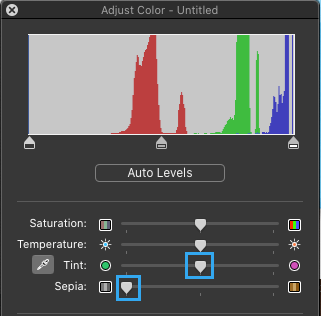

- #Change folder color mac el capitan how to
- #Change folder color mac el capitan mac os x
- #Change folder color mac el capitan update
- #Change folder color mac el capitan windows
The Library folder should be unhidden if it was hidden before.īy default "Terminal.app" will leave its window open even after the command shell exits. It should briefly open a Terminal window and run the command. You can test the script by double-clicking on it in the Finder. Open Terminal.app and go into the folder you saved your script to. Change permissions to make it executable.command extension is, as that will default to being interpreted as a command script that opens with the Terminal program. Open your text editor and create a file that contains the line chflags nohidden ~/Library.
#Change folder color mac el capitan how to
Note that this requires some familiarity with the command line and editing text files using a text editor such as BBEdit, TextWrangler, or emacs or at least knowing how to save as plain text from Word or Notepad.
#Change folder color mac el capitan update
A system update usually requires a logout and log in, so the Library folder will be automatically unhidden again after a system update. If you are a rebel at heart and refuse to play by Apple's rules, you can save command to a file and add it to your login items, so it will be run whenever you log in. Note the intentional butchering of the word "LibrarE" you can change "LibrarE" to anything other than "Library". This will make an alias in your home directory titled "LibrarE" that will take you to the ~/Library folder. Unhide the Library folder using a Terminal command.You can quickly open it by selecting Utilities from the Go menu in the Finder, or by searching for Terminal using Spotlight search. It is located in /Applications/Utilities/. Method 4: Using a Terminal command to "unhide" the Library folder If you ever need to remove it, you can Ctrl-Click on the icon in the Sidebar and select Remove from Sidebar. It will stay there even if you close the Library folder, and you can quickly jump to it by clicking on the favorite. Click-and-hold on the title bar of the open Library window and drag it to the Favorites section in the Sidebar.Hold down the Option key and open the Go menu in the Finder.(Hint: if the Sidebar is not visible for you in Finder windows, select Show Sidebar from the View menu in the Finder.) If you use the Library folder frequently you can add it to your Sidebar like this:
#Change folder color mac el capitan windows
Method 3: Using the Favorites section in the Sidebarįinder windows have a sidebar with a list of Favorites, Devices, and other items. Result: The Library folder will now remain visible in your Mac's directory structure, even if you restart the computer. Click the red traffic light to close the View Options panel.Result: The Library folder will now be set to appear in Finder. In the panel that appears, tick the checkbox next to Show Library Folder.Select View, and then Show View Options in the menu bar at the top of the screen.Result: You will be brought to your user screen in Finder. Select the home user icon in the sidebar.Result: The home icon will be in your sidebar in the Favorites section. Drag the home user icon with your name into the Favorites section in the Finder window's sidebar.Result: The Users window will open in Finder. Type in /Users in the search bar, and click Go.Result: A search bar will appear in Finder. Select Go to Folder in the dropdown menu.Open Finder, and Select Go in the menu bar.Method 2: Keep the Library Folder Visible

This method will always work and requires no system modification. Note that it will not be visible when you close the folder window, but you can always get to it again using Option-Go. Result: Your Library folder will open and you can use it as you normally would. Select Library from the list of places.Hold down the Option key and open the Go menu in the Finder.Instructions Method 1: Using the Finder's Go menu This tutorial covers several methods to make the Library folder visible again.
#Change folder color mac el capitan mac os x


 0 kommentar(er)
0 kommentar(er)
